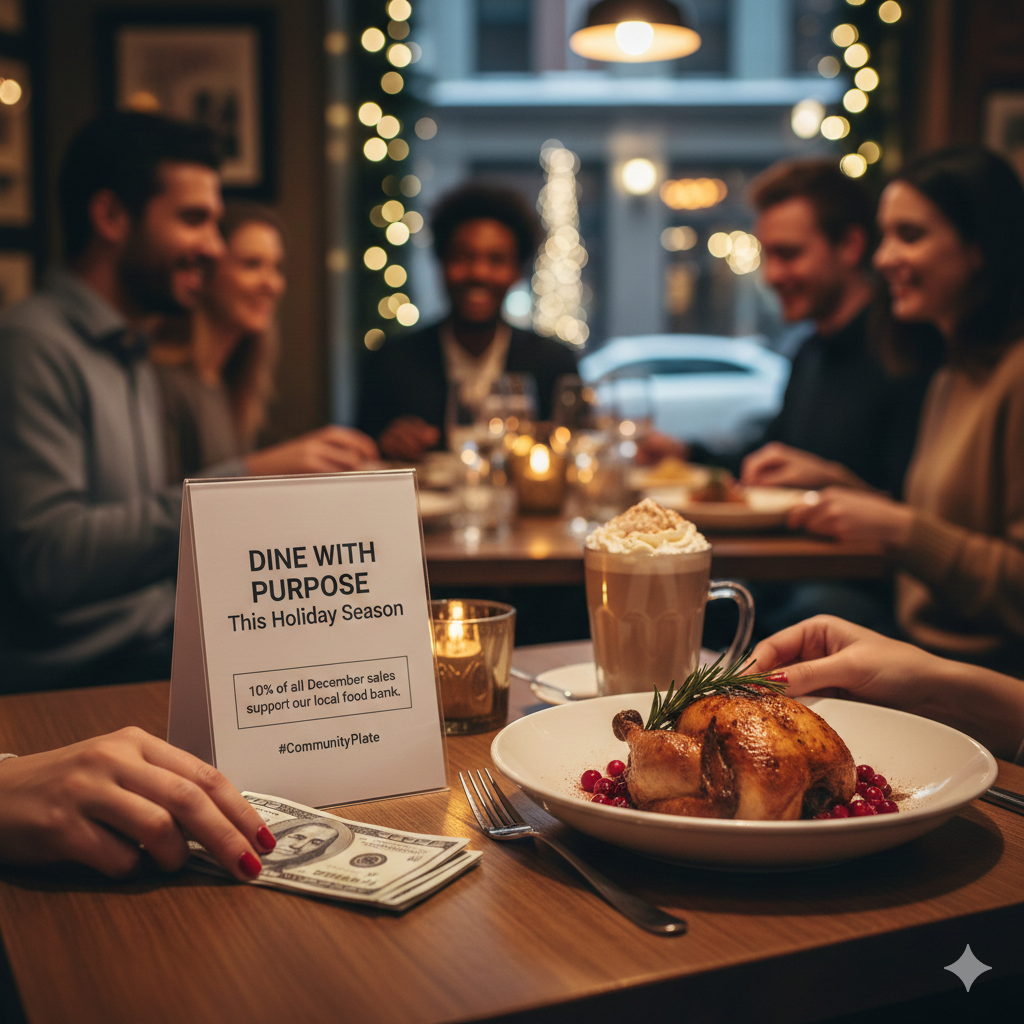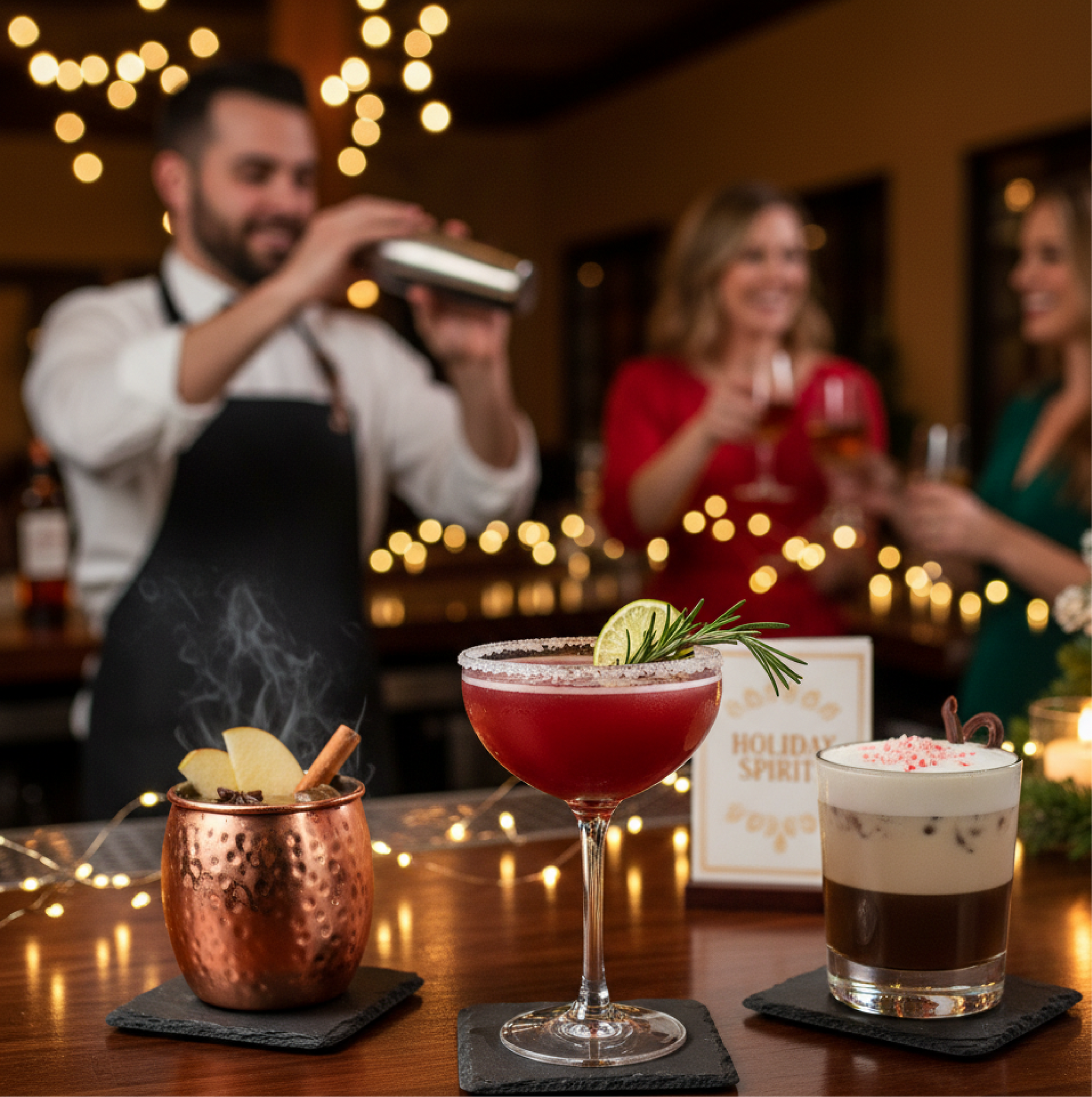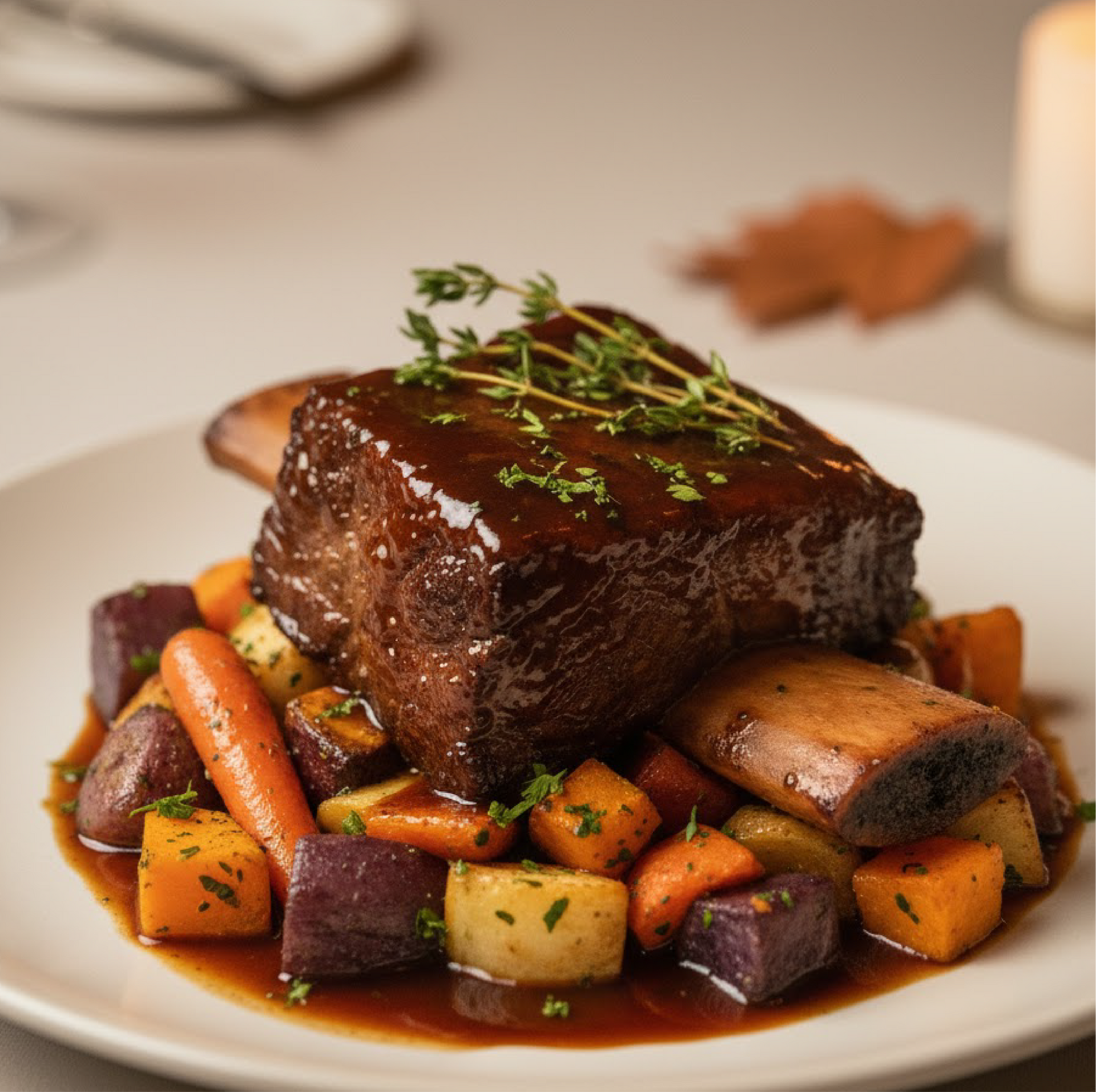Blog
Why Restaurant Branded Merchandise is the Must-Have Marketing Trend
November 18, 2025
Beyond the Menu: Why Restaurant Branded Merchandise is the Must-Have Marketing Trend of 2025
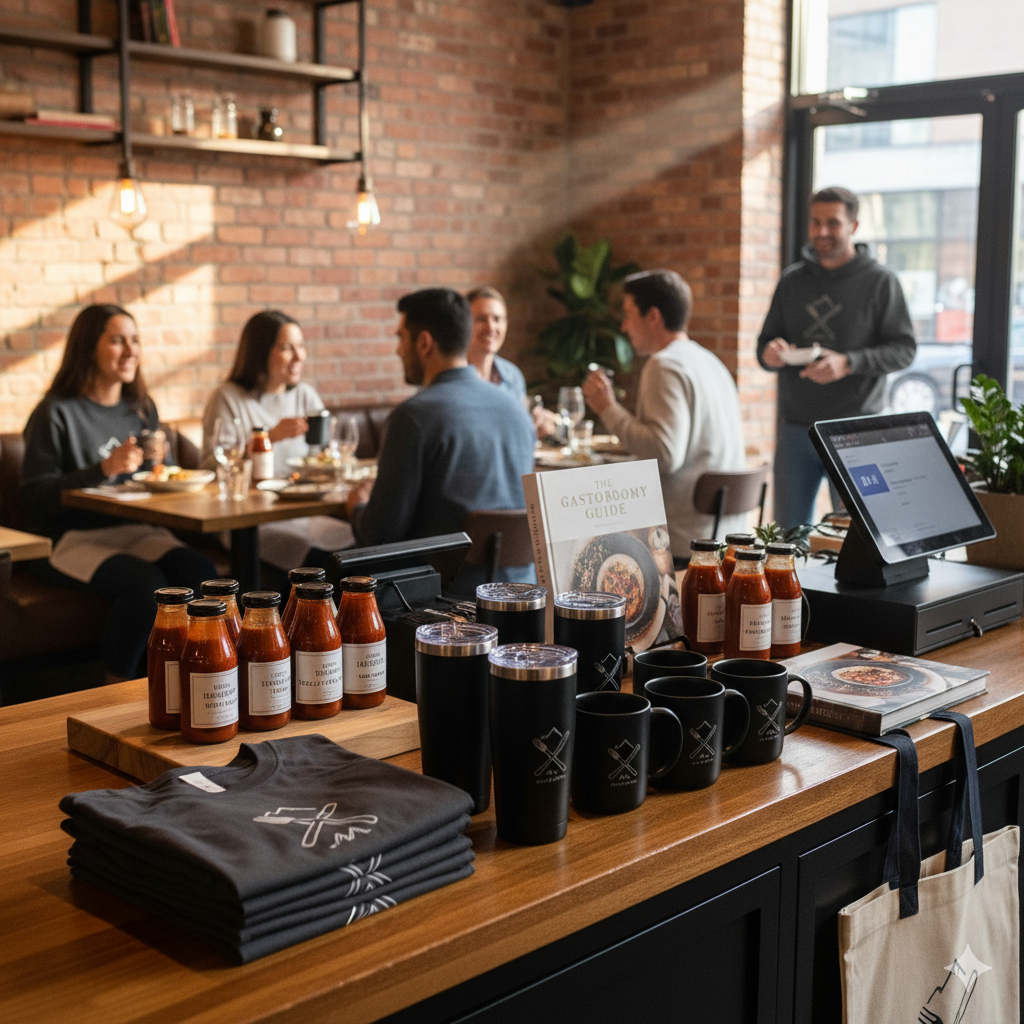
The modern restaurant marketing landscape has fundamentally changed. The dining experience no longer concludes when the check is settled; it extends into the customer’s daily life. Savvy operators are realizing that their brand is their most valuable asset, and they are leveraging it to generate powerful, recurring revenue outside of food and beverage sales.
The defining trend for 2025 is the full adoption of a dedicated restaurant retail strategy powered by high-quality restaurant branded merchandise. This isn't just about selling a cheap keychain; it's about monetizing customer loyalty and transforming your brand into a recognizable lifestyle icon.
The market potential is staggering. restaurant consultants at goliath restaurant consulting have compiled research showing that an estimated 87% of consumers are now interested in buying branded products from their favorite eateries. This massive market opportunity confirms that failing to offer merchandise is leaving significant revenue on the table. For restaurant owners and managers looking to innovate and secure their financial future, developing a robust merchandise program is no longer optional—it is essential.
---
From Dining Spot to Lifestyle Brand: The New Restaurant Retail Strategy
Successful modern restaurants are making the pivot from mere places to eat to becoming coveted lifestyle brands. Their values, aesthetics, and community connection are now just as critical to their identity as their signature dishes. When customers buy your branded products, they are buying into the experience, the community, and the identity you have built.
The Power of the Walking Advertisement
One of the most valuable aspects of restaurant merchandise is its effectiveness as organic, low-cost marketing. A customer wearing a high-quality branded hoodie or carrying a logo tote bag becomes a literal walking advertisement. They are promoting your brand in public spaces—the gym, the park, the office, and the grocery store—driving powerful, organic brand visibility that far outweighs the reach of traditional billboards or digital ads.
This phenomenon is pure restaurant brand building. It leverages the emotional connection a customer has already established with your venue. When people wear your apparel, they are expressing their loyalty and signaling their connection to your brand community. This desire for belonging and public expression is what fuels the demand for stylish, authentic restaurant merchandise.
---
The Business Case for Branded Products: Diversified Revenue and High Margins
For the modern operator, the move into retail is a critical pillar of financial stability. It provides crucial restaurant revenue diversification and offers a powerful hedge against economic fluctuations and industry seasonality.
High Profitability
One of the most compelling reasons to invest in branded products is the exceptional profit margin they offer compared to standard food items. While restaurant food margins typically hover between 5% and 15%, well-priced retail merchandise, such as apparel or specialty food kits, can easily yield margins of 40% to 60%. This additional, high-margin income stream provides financial resilience, enabling your business to thrive even during uncertain times.
Goliath restaurant marketing assists clients in identifying high-margin items that align perfectly with their brand aesthetic and customer demand, ensuring that every retail transaction significantly contributes to the bottom line.
Enhanced Customer Loyalty
The simple act of a customer purchasing your restaurant's merchandise is a powerful sign of their commitment. These customers are your "superfans." The transaction deepens the relationship, turning regular patrons into brand advocates who are more likely to return frequently and recommend your establishment. Many smart restaurant retail strategies integrate merchandise purchases into loyalty programs, rewarding retail spend with dining discounts or exclusive access, further strengthening this valuable customer bond.
---
Apparel and Beyond: Successful Restaurant Merchandise Ideas That Sell
A successful merchandise strategy extends far beyond a basic, low-quality t-shirt. The highest-performing items are those that offer high utility and are stylish enough to be worn or used frequently.
Apparel: The Staple and The Statement
High-quality apparel, including fitted t-shirts, premium hoodies, and stylish caps, remains the foundation of a good strategy.
Best Practice: Treat apparel like a fashion line. Use subtle, artistic design elements instead of just placing a large logo on the chest. Consider limited-edition "drops" tied to seasons or special events (like anniversaries or chef collaborations) to create urgency and a collectible mentality, driving rapid sales.
Specialty Food Items: Extending the Culinary Experience
These are exceptionally high-margin and brand-relevant products. By bottling your famous sauce, creating a branded spice rub, or selling a custom coffee blend, you allow customers to taste your restaurant's home. This reinforces your status as a culinary authority and keeps your brand top-of-mind every time they cook or brew coffee.
Drinkware and Utility
High-quality, branded tumblers, coffee mugs, and water bottles are indispensable because of their utility. Your logo travels with the customer all day, ensuring daily exposure in different environments. Investing in reputable, durable brands (like Yeti or Hydro Flask) for co-branding elevates the perceived value and quality of your branded products.
Culinary Kits and Education
Cookbooks featuring your restaurant's recipes or curated, branded meal kits with pre-portioned ingredients are excellent restaurant merchandise options. They tap into the growing interest in home cooking and positions your business as an educator and source of inspiration.
---
How to Launch Your Restaurant Merchandise Strategy (A Step-by-Step Guide)
Developing a retail arm requires careful planning, but the steps are manageable when broken down.
Step 1: Define Your Brand DNA and Product Line
Your merchandise must be an authentic extension of your restaurant’s personality. A rustic, farm-to-table restaurant should focus on durable, natural fabrics and artisan food kits. A sleek, modern cocktail bar might focus on sophisticated glassware and minimalist apparel. Authenticity is key to effective restaurant brand building.
Step 2: Quality Over Quantity
Do not compromise on product quality. A low-quality t-shirt that shrinks or a poorly-made tumbler that leaks will negatively reflect on the quality of your food and service. Investing in durable, well-designed items ensures that customers will be proud to wear and use your items frequently, maximizing the impact of the walking advertisement.
Step 3: Select Your Sales Channels
A successful restaurant retail strategy needs both a physical and digital presence.
In-Store Display: Create a highly visible, attractive, and well-lit retail display near the host stand or point-of-sale. Train staff to mention the merchandise and upsell customers, especially while they are waiting for a table or checking out.
E-commerce Shop: A dedicated online store (using platforms like Shopify or WooCommerce) is essential. It extends your market far beyond your local physical geography and allows you to sell 24/7. This system must be simple, secure, and fully integrated.
Step 4: Operational Integration
Retail inventory and sales need proper management. Robust POS and inventory systems are required to track stock, manage fulfillment for online orders, and generate precise sales reports. This operational complexity is where experienced restaurant consultants like Goliath restaurant consulting provide invaluable support, ensuring the retail process runs smoothly without disrupting kitchen or front-of-house operations.
---
Maximizing Sales: Best Practices for Promoting Your Branded Products
Merchandise doesn't sell itself; it needs to be actively marketed.
Staff as Ambassadors: Ensure all employees are familiar with the merchandise, know the story behind the products, and are encouraged to wear the apparel. They are your best, most authentic models and ambassadors.
Social Media Hype: Use Instagram and TikTok extensively. Run contests, host giveaways, and feature user-generated content of customers wearing or using your gear. The use of limited-edition "drops" creates scarcity, buzz, and a fear of missing out, driving immediate sales.
Strategic Bundling: Increase the average transaction value by bundling products. Offer a discount for purchasing a meal and a piece of merch, or create attractive holiday gift bundles featuring specialty food items and a high-quality tumbler.
The Unboxing Experience: Enhance the perceived value by making the purchase feel special. Use branded packaging, tissue paper, or a handwritten thank-you note for online orders. This encourages customers to share their purchase on social media, generating free restaurant marketing.
---
Conclusion: The Future of Restaurant Success
A well-executed restaurant retail strategy is far more than a fad; it is a fundamental shift in how successful establishments build community, diversify their income, and generate free, powerful restaurant marketing. In 2025, the restaurants that embrace high-quality restaurant-branded merchandise will be the ones that achieve the strongest financial resilience and the deepest customer loyalty, solidifying their status as true lifestyle brands.
Ready to turn your loyal customers into brand ambassadors and unlock a new, high-margin revenue stream?
The complexity of design, supplier negotiation, logistics, and e-commerce integration requires expert guidance to avoid costly mistakes. Contact the specialized team at Goliath restaurant consulting today to develop and launch your custom-tailored restaurant-branded merchandise program and solidify your status as a leading lifestyle brand.
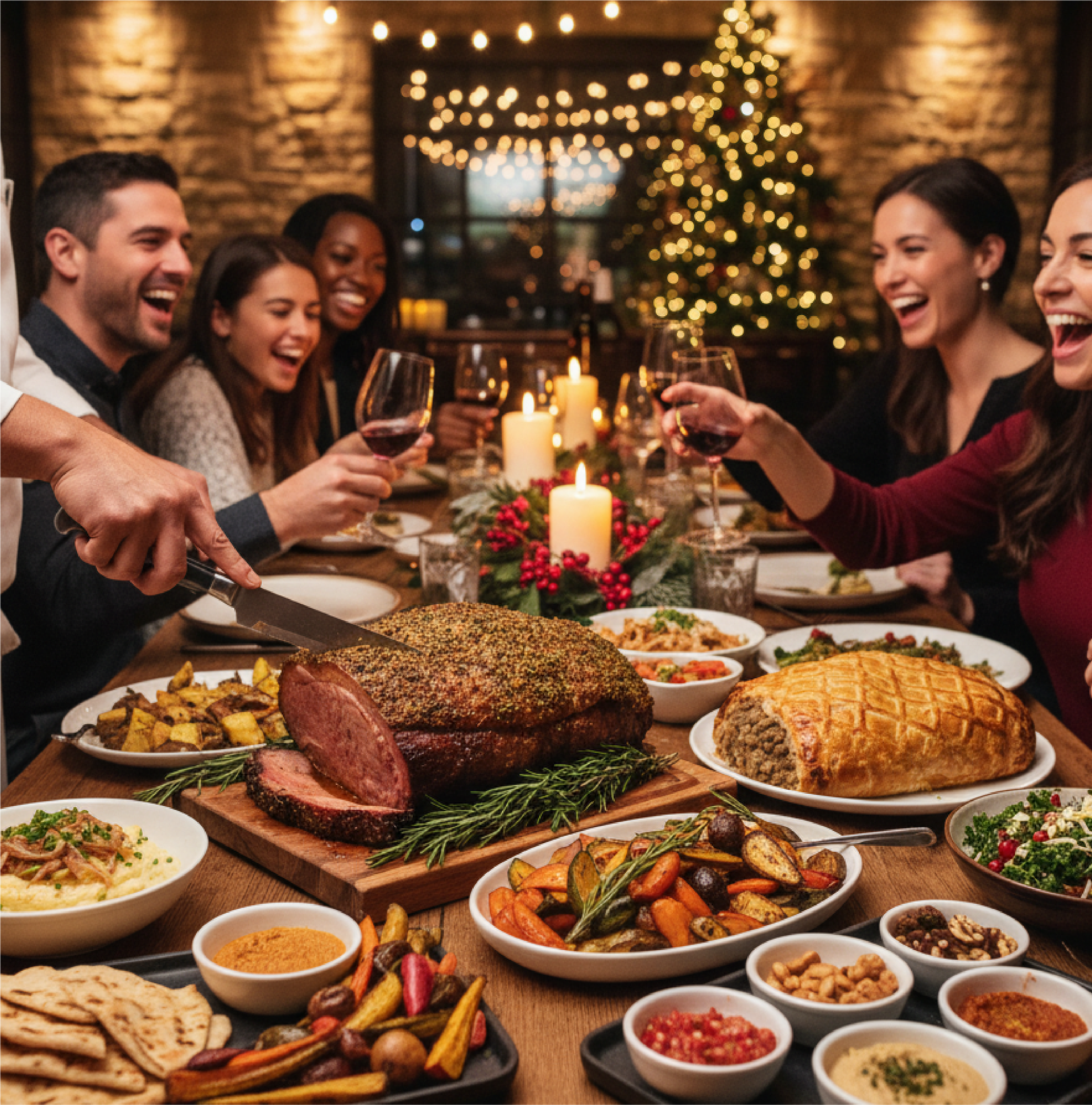
The holiday season is your annual Super Bowl. It’s the time of year when consumer willingness to spend peaks, with an expected 64% of diners planning to order festive meals from restaurants. Yet, many operators fail to maximize this opportunity, sticking to tired menus and missing out on the demand for elevated, trend-forward dining experiences. The difference between a moderately successful holiday season and a breakthrough quarter often hinges on one thing: a strategically designed holiday food menu that balances profitability, operational efficiency, and cutting-edge consumer trends. In this guide, we dive into the data, showing you how to capture guests who are willing to spend 25-49% more for a memorable holiday meal. You’ll learn which menu items are guaranteed hits, how to engineer your offerings for maximum margin, and the operational tactics needed to execute flawlessly during the busiest time of the year. The Changing Holiday Dining Landscape Today's holiday diner isn't just hungry; they're looking for an event. A whopping 67% of diners are specifically seeking "more than a standard dining experience"—they want themed meals, multi-course feasts, and interactive elements. This demand translates directly into high-value bookings. Data shows a 24% surge in premium dining bookings compared to last year, proving that guests are prioritizing quality and atmosphere. Furthermore, the average consumer spending on dining out is up from $166 in 2023 to $191 per month, indicating a higher comfort level with discretionary spending. The Shift to Group and Off-Peak Dining Two critical behavioral shifts are emerging: Group Power: 52% of holiday bookings are now for parties of eight or more. Your menu and operational setup must efficiently accommodate large groups with streamlined ordering and flexible seating. Early Birds: Almost half of diners (49%) prefer to make reservations between 4:00 PM and 6:00 PM, a noticeable shift from traditional peak hours. This presents a massive opportunity to maximize table turns and staff efficiency by offering attractive early dining incentives. For small to mid-sized groups, effective restaurant consulting often involves capitalizing on these larger group bookings with fixed-price packages that guarantee check averages and simplify kitchen execution. What Diners Actually Want: Top Holiday Food Trends While the desire for an experience is growing, the dishes themselves are rooted in comfort and tradition—but with a twist. Traditional Favorites Still Reign Supreme Don't abandon the classics! They are the anchor of your holiday menu. Traditional sides, particularly potatoes, are absolute must-haves: 76% of diners favor roasted potatoes, and 75% favor mashed potatoes. Turkey, while still popular at 74%, is actually slightly edged out by potatoes! Ensure your menu features high-quality versions of staples like stuffing, prime rib, and classic desserts. Nostalgia with a Modern, Global Twist Diners crave the familiar but appreciate innovation. The key trend is taking traditional holiday dishes and infusing them with global flavors. Example 1: Instead of standard roast turkey, offer a 'Moroccan Spiced Turkey Breast' rubbed with za’atar and served with apricot-pistachio stuffing. Example 2: Reimagined sides, such as cranberry sauce infused with yuzu or a pumpkin pie spiced with a custom blend of West African peppers. Plant-Based Takes Center Stage Plant-based dining is no longer a niche afterthought; it’s the #1 restaurant trend of 2024. You must offer more than just a token salad. Menu items like a 'Root Vegetable and Mushroom Wellington' or 'Lion's Mane "Pulled Pork"' sliders offer luxurious, substantial alternatives that appeal to the growing segment of health-conscious and sustainable diners. Remember to accommodate dietary needs; avoiding plant-based options is one of the critical mistakes that restaurant marketing consultants advise against. Experience-Centric Dining Interactive elements transform a meal into an event. Consider implementing: Tableside Carving: For a premium roast beef or prime rib, tableside presentation adds drama and perceived value. Interactive Stations: A 'Build-Your-Own Holiday Mezze Platter' or customizable dessert bar allows guests to engage with the food. These experiential elements justify the premium pricing your holiday menu can command. Building a Menu Engineered for Profitability Your goal is to delight guests while maintaining a sustainable food cost percentage, ideally targeting 28-35%. Holiday menus provide the leverage to charge a 20-25% premium on specialty items compared to regular menu pricing. Even your existing popular items can handle a 15% price increase during the holiday season. The Power of Prix Fixe and Bundling The single most effective strategy for increasing average check size is bundle pricing. A three-course prix fixe menu provides perceived value to the guest while guaranteeing revenue and simplifying your kitchen’s execution. This approach, alongside proper menu engineering, can increase overall restaurant profits by 10-15%. High-Margin Heroes Where do you focus your cost-control efforts? Appetizers: These should be profit powerhouses, often boasting higher margins than entrées due to lower cost of ingredients and quick prep time. The Turkey Opportunity: Turkey prices have been significantly lower in 2024, making it a highly profitable main course when properly portioned. Overlapping Ingredients: To minimize the costly waste that plagues the industry (restaurants waste 4-10% of purchased food), design your menu so ingredients are shared. For example, the herbs used for your Prime Rib jus should also be used in your roasted vegetable side dish, reducing inventory and spoilage. Experienced restaurant consultants always emphasize designing a menu that forces the customer’s eye toward the highest-margin items while utilizing common ingredients across the entire holiday offering. Operational Strategies for Flawless Holiday Execution A sophisticated menu requires an efficient kitchen. In a time of persistent staffing shortages, operational excellence is critical to maintaining quality and controlling costs. Waste Reduction is Profit For every $1 invested in reducing food waste, restaurants realize approximately $8 in cost savings. Implement strict FIFO (First In, First Out) inventory management and maximize ingredient utilization through root-to-stem cooking (e.g., using broccoli stems for a side mash) to curb the 4-10% of food waste that eats into your profits. Focused Menu & Training Keep your temporary holiday menu focused—aim for only two to three signature holiday entrées plus a vegetarian option. This prevents kitchen overwhelm and guarantees consistency. Staff training is non-negotiable. Your servers must be experts on the limited-time offerings (LTOs), especially dietary accommodations and the ingredients. Well-trained staff are your best asset in driving the upsell of premium items. Furthermore, use demand forecasting by reviewing last year’s historical data to accurately predict necessary prep and staffing levels, a crucial step when accommodating the growing number of large parties. Marketing Your Holiday Menu for Maximum Impact Your incredible holiday menu needs to be promoted early and often. The psychological power of Limited Time Offers (LTOs) is immense; they drive an 81% increase in guest likelihood to visit. Launch your LTOs and promotions by early November, using deadlines (like November 15th for early booking incentives) to create urgency. Focus your marketing on the experience—the cozy atmosphere, the festive feeling, and the premium quality. Visual content is essential. Use social media and email marketing to showcase the beautiful plating and unique environment. Email campaigns should offer exclusive early-access to reservations or a free appetizer for booking before a specific date, capitalizing on the anticipated 15-20% growth in gift card purchases. This proactive, experience-focused promotion is the core of smart restaurant marketing consulting. Common Mistakes to Avoid Chasing Trends Over Tradition: While innovation is important, failing to offer high-quality versions of classics (like potatoes and turkey) will alienate a large segment of diners. Over-Complicating the Menu: Too many menu items slow down the kitchen and confuse servers. Keep it focused and profitable. Starting Too Late: If your promotions don't start until Thanksgiving, you’ve missed the prime booking window. Ignoring Dietary Needs: Neglecting robust plant-based, gluten-free, and allergy-friendly options immediately shuts out a significant portion of potential high-value bookings. Poor Waste Management: Allowing 4-10% of your purchased food to go to waste is the fastest way to erase your high-margin potential. Secure Your Record-Breaking Season The holiday season offers a unique dual opportunity: satisfy your guests’ desire for memorable, experience-centric dining while delivering unprecedented profitability to your business. By integrating the popularity of classic dishes with modern, high-margin twists, leveraging the efficiency of prix fixe menus, and committing to operational excellence, you can easily capture the premium spending that defines the 2024-2025 holiday diner. Implement these strategies now. If optimizing your menu and operational efficiency seems daunting, seeking professional restaurant consultants can help you streamline the process and ensure a successful, profitable end-of-year rush.
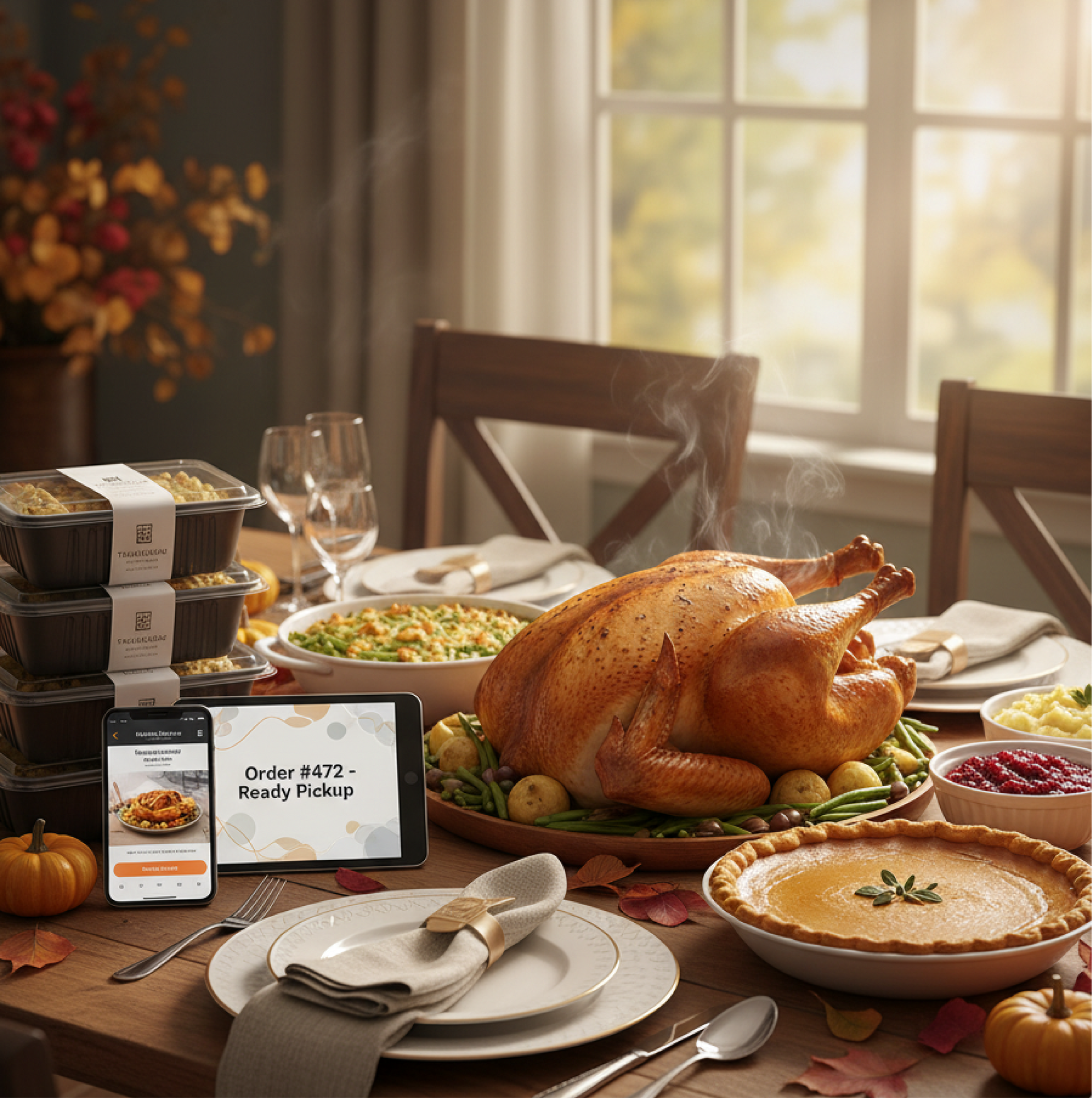
The Thanksgiving Opportunity: Why Restaurant Owners Can't Afford to Miss This Growing Revenue Stream
Don't miss the Thanksgiving revenue wave. With dine-in declining and takeout surging, find out how to craft the perfect menu and master holiday catering logistics.

The Business Impact of New ICE Raids on Latin American Restaurants in the U.S. The recent increase in immigration enforcement activity by U.S. Immigration and Customs Enforcement (ICE) is creating significant operational and financial challenges for Latin American restaurants nationwide. These establishments represent a major component of the U.S. hospitality industry, employing hundreds of thousands of workers and contributing billions to the economy. As enforcement actions intensify, restaurant operators are facing workforce disruptions, declining sales, and heightened compliance concerns. Workforce Disruptions and Labor Shortages Labor stability remains the most immediate challenge. Latin American restaurants, like many in the hospitality sector, rely on a diverse labor pool that often includes immigrants. The renewed ICE operations have led to sudden employee absences, voluntary resignations, and difficulty recruiting new team members. In certain regions—particularly in states with large Latino populations such as Texas, California, and Florida—restaurant owners report losing up to 20% of their workforce within weeks of increased enforcement activity. These shortages are directly affecting service capacity, operational hours, and menu consistency. Many restaurants have been forced to shorten hours or reduce offerings due to the inability to staff kitchens or front-of-house positions adequately. Financial Consequences and Sales Declines Revenue declines are also being reported across multiple markets. Restaurants that depend on local, community-based traffic are experiencing a measurable drop in dine-in sales, estimated by some operators at 25–40%. Although delivery and takeout channels remain active, these models generally yield lower margins and higher third-party fees. For smaller, family-owned establishments that operate on tight cost structures, this loss of volume poses a substantial threat to profitability. Additionally, some suppliers and distributors serving these restaurants are seeing reduced order volumes, suggesting the ripple effect of the enforcement environment extends through the broader food-service supply chain. Compliance, Risk, and Legal Exposure The renewed focus on worksite enforcement has also introduced higher compliance costs. Restaurant owners are investing additional time and resources into verifying employment eligibility, reviewing documentation, and training managers on proper I-9 procedures. Legal counsel specializing in immigration and employment law have noted a rise in consultation requests from independent operators seeking to mitigate liability. Recent court decisions—such as the October 2025 ruling in Missouri and Kansas that limited ICE’s authority in certain warrantless arrest cases—offer partial guidance, but the regulatory environment remains fluid and regionally inconsistent. Industry and Market Implications If current trends continue, analysts expect a temporary contraction in the Latin American restaurant segment, particularly among small independent operators. Larger multi-unit groups with established HR and compliance infrastructure are better positioned to absorb the disruption, while single-unit restaurants may face consolidation pressures. At a market level, the reduction in operating capacity could result in slower service, higher menu prices, and shifts in customer demand toward larger chains or non-affected cuisines. Over time, these dynamics could alter competitive balance in key metro markets where Latino dining establishments have historically been strong community anchors and economic contributors. Conclusion The escalation of ICE enforcement actions has introduced new layers of operational risk to Latin American restaurants across the U.S. The effects are being felt in workforce stability, sales performance, and compliance costs. For owners and operators, the path forward will require enhanced documentation practices, proactive communication with legal advisors, and flexible business models capable of adapting to ongoing labor and regulatory volatility. While the cultural and community value of these restaurants remains undeniable, the current climate underscores the need for strategic management and preparedness within one of America’s most resilient—and now most scrutinized—restaurant sectors.

Introduction Nice work — you made it to the third and final post in our Fall/Winter 2025 LTO series. If you ran the creative and the marketing, this piece is the practical follow-through: how to make the promotion actually work on the floor, in the kitchen, and at the ordering screen. This is written for local operators running one to a few locations. You’ll find simple, usable steps for training your team, keeping inventory sensible, working with suppliers, and measuring what matters — all in a friendly, low stress way you can put into practice this week. ________________________________________ Training: keep it short, clear, and useful Don’t overcomplicate training. Make one short sheet that tells the LTO’s story, lists ingredients and allergens, shows a plated photo, and gives a couple of quick lines for staff to use with guests. Everyone signs off before the first shift so you start with the same baseline. Practice matters more than paperwork. Run one short practice service, taste the item with servers, and let cooks walk through the steps together. Use short 3–7 minute refreshers between shifts, and reward the first people who finish training with a small perk — free coffee, a shift meal, or a gift card. That little boost gets buy-in fast. Training Module Front-of-House (FOH) Back-of-House (BOH) Product Knowledge Item description, ingredients, allergen info, menu positioning Recipe steps, ingredient handling, equipment settings, plating standards Upselling & Service Sales scripts, suggestive selling, handling questions or complaints N/A Execution Steps Ticket entry, special notations, communicating sell-outs Prep timing, portioning, plating, special handling Troubleshooting What to do if item is 86’d, customer confusion, long waits Substitutions, batch prep issues, out-of-stock protocols Communication Reporting guest feedback trends, service issues Communicating backlogs, shortages, or failures to FOH ________________________________________ Pre-launch: simple planning that prevents headaches Think of an LTO like a weekend pop-up. Make a short checklist and a timeline — nothing fancy. Key items: recipe locked, POS updated, staff trained, promos printed, and the first shipment received. Run a friends-and-family shift if you can; that one rehearsal solves more problems than pages of notes. On launch day, gather your team for a 10-minute huddle. Confirm who’s doing what, check par levels, and name the escalation path: who calls the vendor, who covers the line, and who talks to customers if there’s a delay. Clear roles keep the day calm. ________________________________________ Recipes: clear, consistent, and forgiving A good recipe is your best friend. Write it down with weights, a photo, and one or two “must-do” steps (e.g., don’t over-sauce, finish under heat for 30 seconds). Keep it practical for the pace you work at — if it’s a busy lunch spot, simplify plating; if you’re a dinner service with servers explaining dishes, include talking points. Add a short troubleshooting note: “If browned too quickly, lower heat 20%” or “If sauce runs, hold off on garnish until right before serving.” Little tips reduce mistakes and save time. ________________________________________ Pars and ordering: be conservative at first When you launch something new, start small. Estimate daily sales, add a 10–15% buffer, and order that first delivery. Check sales the first two days and adjust. If you overshot, use excess ingredients in specials, staff meals, or daily features — don’t let them sit and spoil. Highlight LTO items on your order guide so the buyer doesn’t miss them. If your supplier can do smaller, more frequent deliveries, ask — it’s a great way to avoid waste without sacrificing availability. ________________________________________ Inventory basics without the fancy tech If you don’t have integrated systems, that’s fine. Use a simple spreadsheet or a clipboard count. Do a quick count at the start and end of each day during week one, then every few days after that. Track usage versus what you expected and adjust orders fast. For perishables, rotate stock (FIFO), label prep with dates, and keep an eye on any ingredient that shows up only for the LTO. If something’s not moving, mark it down or make a staff special before it goes bad. ________________________________________ Work with suppliers like a partner Tell your supplier about the LTO early — what you need, when, and how much. It helps them plan and keeps you from surprise shortages. Ask if they’ll do smaller cases or staggered drops for the first week. Also, confirm what happens after the run ends: will they take back unused cases, or can you return unopened boxes? A supplier that understands your rhythm is worth more than a slightly cheaper price. ________________________________________ Waste control that won’t stress you out Design the LTO so parts of it can be reused: a sauce that works on a sandwich, a protein that can top a salad, or a garnish that refreshes a daily special. Promote an “end of run” special two days before the takedown to move extra product. Small changes like this cut waste and recover your cost if sales are slower than hoped. ________________________________________ Keep score — but keep it simple Track a few things each day: how many LTO items sold, food cost for the item (roughly), any extra labor time, and guest feedback. A short end-of-day note from the manager on what went well and what didn’t is incredibly useful. Run a short post-mortem after the promotion: what sold, what didn’t, what to tweak next time. This isn’t about spreadsheets for spreadsheets’ sake — it’s about learning so the next LTO runs smoother. ________________________________________ Quick examples that make the point We’ve seen small operations win big with these basics. One owner tested a fried-sandwich special and learned they needed one extra fryer basket during lunch — simple fix, big lift in speed. Another turned leftover specialty slaw into a discounted side two days before the takedown and cleared their remaining stock while keeping guests happy. Small adjustments, quick reactions, and honest team feedback make the difference. ________________________________________ Final checklist — what to do this week • Lock the recipe and print one quick cheat sheet. • Run one practice service and get signoffs. • Order conservatively and plan a mid-week reorder. • Label and rotate all LTO ingredients. • Do daily counts during week one and jot manager notes. • Run a short post-mortem and capture two things to change next time. body content of your post goes here. To edit this text, click on it and delete this default text and start typing your own or paste your own from a different source. Goliath Consulting Group is a restaurant consultancy group based in Atlanta, Georgia. To learn more about our services including menu development, business strategy, marketing, and restaurant operations, contact us at http://www.goliathconsulting.com or email us at getresults@goliathconsulting

